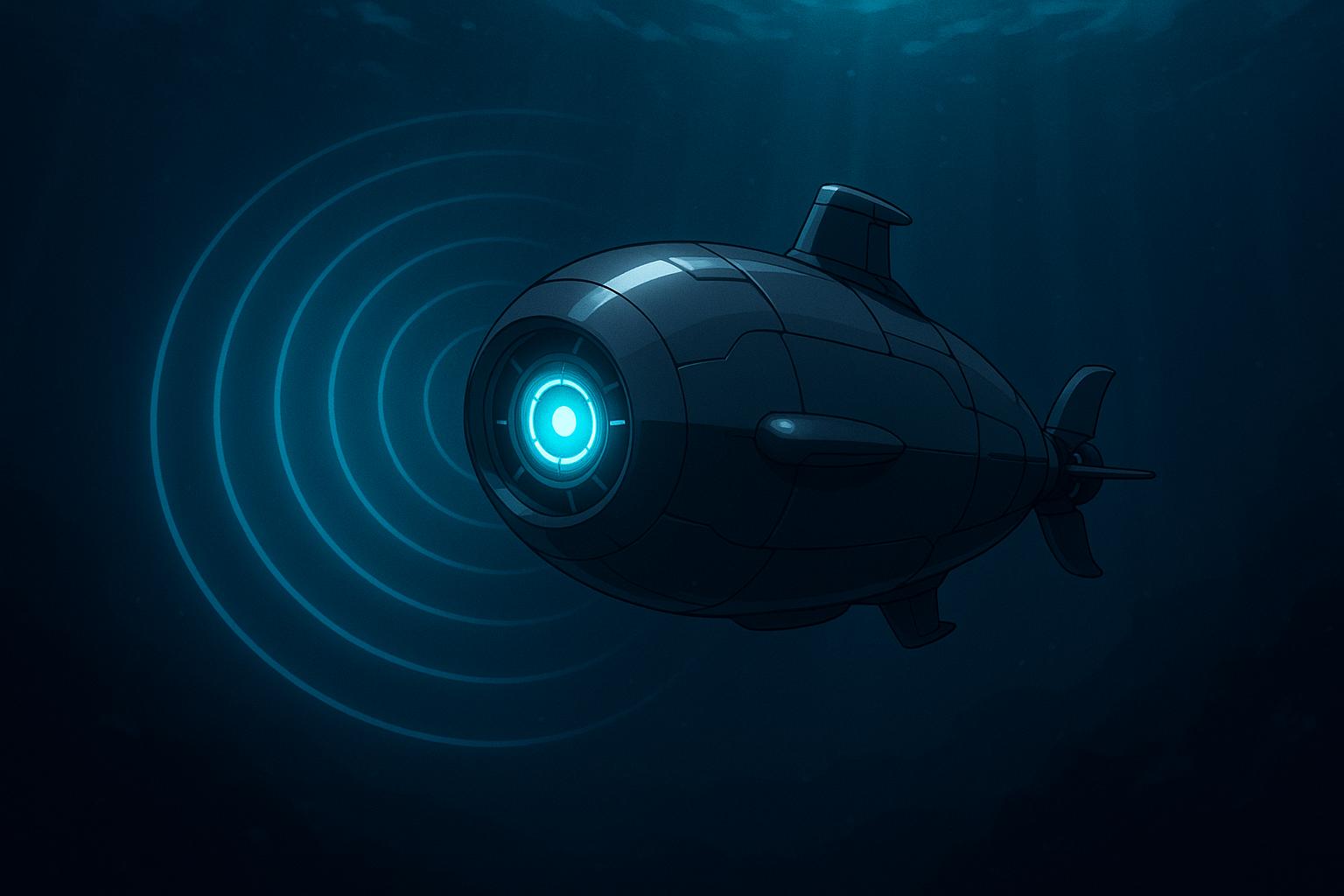The recent unveiling of a miniature submarine by the German company Helsing is poised to mark a significant moment in naval warfare technology. The SG1-Fathom, measuring approximately two metres in length, is constructed to operate unpowered and without moving parts, relying on passive sonar technology to detect enemy vessels. This innovative approach mirrors the underwater tracking capabilities of larger warships but presents a radical shift in surveillance tactics. The implications of such advancements are vast, particularly in the context of escalating geopolitical tensions.
At the heart of the SG1-Fathom’s capabilities is the cutting-edge Lura AI system, which enables the drone to detect the acoustic signature of submarines at volumes ten times quieter than human-operated sonar systems, classifying targets at an astonishing speed—40 times faster than current methodologies. This level of efficiency would not only reduce the number of personnel required to operate conventional naval patrols but also allow for widespread deployment of drones. The strategic potential is enormous; deploying a thousand of these drones to regions like the Arctic could significantly undermine the stealth advantages of nuclear-powered submarines typically employed by Russia and other military powers.
Helsing's innovation comes at a time when Western nations are increasingly focused on fortifying their underwater reconnaissance capabilities. Amid rising threats to subsea infrastructure, particularly from adversaries like Russia and China, these autonomous drones could play a crucial role in maritime defence strategy. As noted by analysts, the significance of the SG1-Fathom extends beyond mere technological advancement; it could alter the parameters of naval warfare just as artificial intelligence has already transformed ground combat dynamics in conflict zones like Ukraine.
However, the advent of such technologies raises critical concerns about the response mechanisms of rival states. Russia, particularly, has vocalized its commitment to advancing nuclear deterrent capabilities, with Deputy Foreign Minister Sergei Ryabkov asserting the nation's readiness to defend its interests in an age increasingly dominated by AI. This defensive posture is underscored by the potential for new technologies to revisit the strategic balance maintained through the doctrine of mutually assured destruction (MAD).
As AI evolves, so do the threats associated with it. The rapid advancement of AI capabilities poses substantial risks to existing nuclear frameworks, necessitating a thorough reevaluation of deterrent strategies. The capacity for AI to autonomously enhance its learning processes introduces complexities that could further destabilise traditional notions of nuclear deterrence. Countries might respond to the perceived vulnerabilities created by AI in their military assets by rethinking their strategic doctrines—investing more in land-based missile systems or developing tactical nuclear capabilities as counterbalances.
Moreover, ethical considerations emerge prominently in discussions surrounding these technologies. For instance, the implications of equipping autonomous drones with lethal capabilities, potentially allowing them to act without human oversight, evoke feelings of unease. The spectre of AI making decisions in high-stakes environments could lead to unforeseen incidents if, for instance, the AI system misidentifies targets, reflecting concerns similar to those associated with failures in other AI systems like ChatGPT.
The transition to a defence paradigm heavily influenced by AI will necessitate a cultural shift within military and governmental structures, where decision-making traditionally favours risk aversion and gradual procurement processes. To remain competitive amidst this evolving landscape, the UK defence industry must become adept at managing innovation—embracing faster decision-making and accepting greater risks.
Ultimately, the intersection of AI and naval warfare represents a transformative, albeit precarious, evolution in military strategy. The geopolitical landscape is likely to be profoundly affected by these developments, demanding that nations navigate an increasingly complex interplay between technological advancement and international stability. As powers consider their next moves, the world may witness a new era where the balance of maritime power is dictated not only by brute force but also by technological supremacy.
Reference Map
- Paragraph 1: [1], [2]
- Paragraph 2: [1], [2]
- Paragraph 3: [1], [2], [3]
- Paragraph 4: [1], [3]
- Paragraph 5: [4], [5], [6]
- Paragraph 6: [7]
- Paragraph 7: [1], [2]
- Paragraph 8: [6]
- Paragraph 9: [1], [2], [4]
Source: Noah Wire Services
